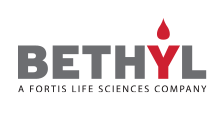Rabbit anti-CSN5 IHC Antibody

Catalog #
CSN5
Human
,Mouse
IHC
Rabbit
Polyclonal
Whole IgG
Between 175 and 225
IgG
Unconjugated
Antigen Affinity Purified
Product Details
Mouse,
Human
Guinea_pig,
Horse,
Zebra_finch,
Turkey,
Monkey,
Dog,
Chicken,
Pig,
Rabbit,
X_laevis,
X_tropicalis,
Zebrafish,
Bovine,
Rat
Human
2 - 8 °C
1 year from date of receipt
CSN5 is one of eight subunits (CSN1 to 8) of the highly conserved COP9 signalsome (CSN) complex originally identified as a regulator of light-mediated development in Arabidopsis. Characterization of CSN from yeast to mammals reveals its function as a modulator of signal transduction pathways involved in a variety of cellular and developmental processes. One of the major functions of the CSN is the regulation of protein degradation via intersection with the ubiquitin-proteasome pathway and regulation of E3-ubiquitin ligases. CSN also possesses kinase activity. CSN5 has been identified as the subunit that functions to remove Nedd8, an ubiquitin-like modifier, from cullin-based E3-ubiquitin ligases. CSN5 also functions as a coactivator of nuclear receptors. COP9 signalsome complex subunit 5, signalsome subunit 5, SGN5, jun activation domain-protein 1, COPS5, JAB1, MOV-34, MGC3149.
Alternate Names
38 kDa Mov34 homolog; COP9 constitutive photomorphogenic homolog subunit 5; COP9 signalosome complex subunit 5; CSN5; JAB1; jun activation domain-binding protein 1; MOV-34; SGN5; signalosome subunit 5; testis secretory sperm-binding protein Li 231m
Applications

